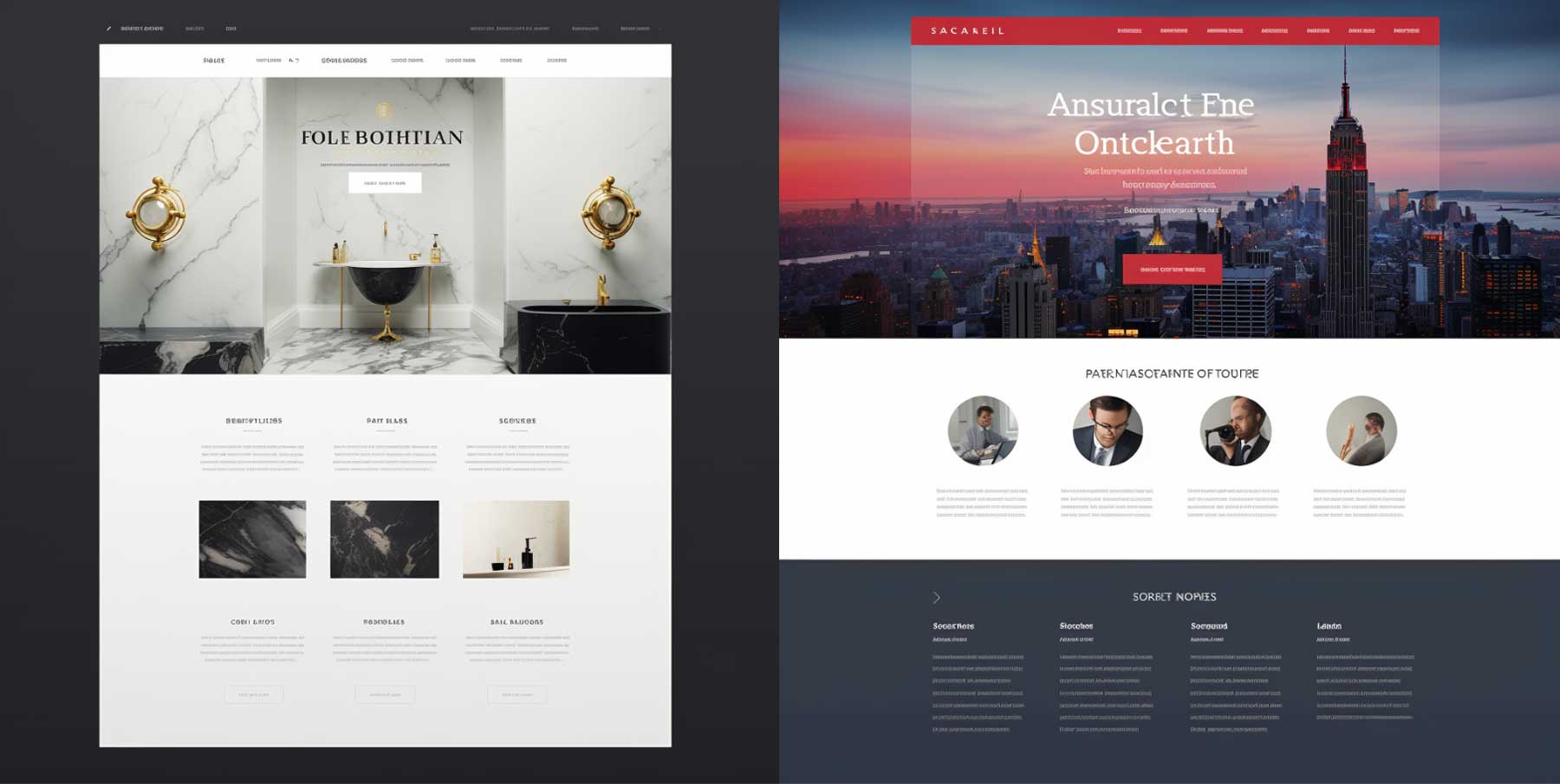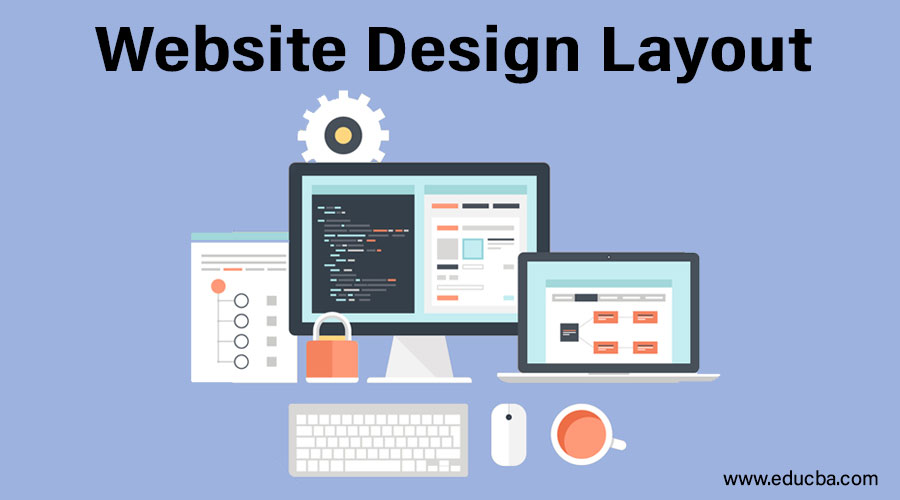Modern Internet Site Design That Captures Interest and Converts
In a progressively digital landscape, modern-day web site design has emerged as a crucial factor in catching individual focus and driving conversions. As we explore these vital parts, it ends up being clear that comprehending their interplay can dramatically influence an internet site's efficiency and customer complete satisfaction.
Relevance of Visual Hierarchy
Visual power structure is an important element in web site layout, as it guides customers' interest and boosts their general experience. By tactically arranging material, developers can route customers to the most crucial information initially, thereby boosting interaction and boosting usability.
Integrating a rational flow in web content arrangement is essential; as an example, positioning the most essential information on top of a web page promotes prompt acknowledgment. Furthermore, regular use of typography, such as differing font sizes and designs, aids establish a clear material framework. This organization not just help in navigating but also develops trust fund, as users feel much more comfortable when they can conveniently discover what they are searching for.
Inevitably, a well-executed visual hierarchy not only improves visual allure yet likewise significantly affects customer actions. By focusing on important aspects and making certain a smooth experience, developers can properly convert visitors right into consumers, enhancing the significance of this foundational style principle in contemporary internet site development.
Responsive Design for All Devices
Creating a smooth experience throughout numerous tools is crucial in today's electronic landscape, where individuals access websites from desktop computers, smart devices, and tablet computers alike. Responsive layout is an important technique that makes sure websites adapt fluidly to various screen positionings, resolutions, and dimensions. By utilizing versatile grids, pictures, and CSS media inquiries, developers can produce formats that maintain aesthetic integrity and capability, no matter of the tool being made use of.
The value of receptive design prolongs past looks; it directly affects individual engagement and conversion prices. A web site that works well on all devices motivates longer visits and lowers bounce rates, as customers are most likely to connect with content that is very easy to navigate. Search engines, specifically Google, focus on mobile-friendly sites in their positions, making responsive style a vital element of search engine optimization (SEARCH ENGINE OPTIMIZATION)
Including responsive layout not only improves individual experience but also enhances the development process. By developing a single site that works throughout tools, organizations can save time and resources compared to establishing different mobile and desktop computer versions. Ultimately, responsive design is a fundamental approach for modern-day website design, guaranteeing availability and complete satisfaction for all individuals, no matter their gadget.
Involving Interactive Aspects
While a responsive layout lays the groundwork for a useful web site, incorporating interesting interactive aspects is crucial for recording user focus and cultivating much deeper links. Website Design. Interactive elements, such as computer animations, tests, and clickable infographics, produce an extra vibrant individual experience, encouraging site visitors to invest more time on the site
Incorporating interactive functions can likewise direct users via complicated info, making it less complicated to digest web content. For instance, interactive sliders can highlight item variations, while ingrained video clips can offer demos or testimonials that reverberate even more than static photos or text. Gamification strategies, like incentives for completing jobs or engaging with content, can boost individual inspiration and retention.
Efficient usage of interactive components not only improves the customer experience however can also bring about higher conversion prices. By making interactions delightful and insightful, organizations can cultivate a sense of commitment and count on with their target market. It is important to stabilize interactivity with performance; extremely complex functions might prevent site speed, adversely affecting user complete satisfaction. Inevitably, integrating well-designed interactive aspects can considerably boost a site's effectiveness, driving involvement and conversions in today's affordable digital landscape.
Streamlined Navigation Practices
Effective navigation is a foundation of any kind of effective site, as it directly influences user experience and content access. Structured navigation practices make sure that individuals can easily find details, boosting their communication with the website. A well-structured navigating food selection ought to be user-friendly and basic, normally including a restricted variety of key groups to avoid frustrating visitors.
To attain structured navigating, developers need to prioritize a hierarchical structure that rationally organizes content. Applying breadcrumb routes can supply customers with context about their current area within the site, permitting smooth backtracking. Additionally, making use of drop-down menus can properly preserve area while still offering access to subcategories.
Receptive design is important, as navigation should be useful across all tools (Website Design). Mobile customers, specifically, gain from touch-friendly menus and retractable sections that maintain sites use without jeopardizing appearances

Reliable Call-to-Action Methods
A well-crafted call-to-action (CTA) is vital for leading individuals towards desired end results on a site, as it encourages them to engage with content or make a purchase. To optimize their performance, CTAs should be clear, engaging, and strategically positioned throughout the site.
First, use action-oriented language go now that communicates necessity or worth, such as "Get going," "Join Now," or "Claim Your Discount." This language not only inspires individuals however likewise sets clear assumptions concerning the next actions.
Second, consider design aspects; CTAs need to stand apart aesthetically through contrasting colors, adequate whitespace, and prominent positioning. A button that is simple to see and click rises the possibility of individual communication.
Additionally, individualizing CTAs based upon user behavior or demographics can substantially improve involvement. Tailored messages resonate a lot more with customers, driving greater conversion rates.

Verdict
To conclude, modern-day web site layout emphasizes the combination of aesthetic hierarchy, responsive formats, involving interactive elements, streamlined navigation, and efficient call-to-action strategies. These elements collectively improve customer see this website experience, making certain that visitors stay involved and inspired to discover web content even more. By focusing on these layout concepts, businesses can dramatically boost individual retention and conversion rates, inevitably leading to better success in the electronic landscape. The continual evolution of internet design highlights its vital function in effective on-line interaction and marketing.
In a significantly electronic landscape, modern-day website layout has actually emerged as a pivotal factor in capturing user attention and driving conversions.Visual power structure is an essential aspect in internet site style, as it guides customers' focus and improves their general experience.The significance of receptive style extends past aesthetic appeals; it straight affects user involvement and conversion prices.Integrating receptive style not only boosts user experience yet likewise enhances the development procedure. Ultimately, receptive design is an essential technique for modern-day site design, making certain accessibility and fulfillment for all users, regardless of their tool.
Comments on “Website Design Strategies to Ensure Your Site is Visually Appealing and User-Friendly”